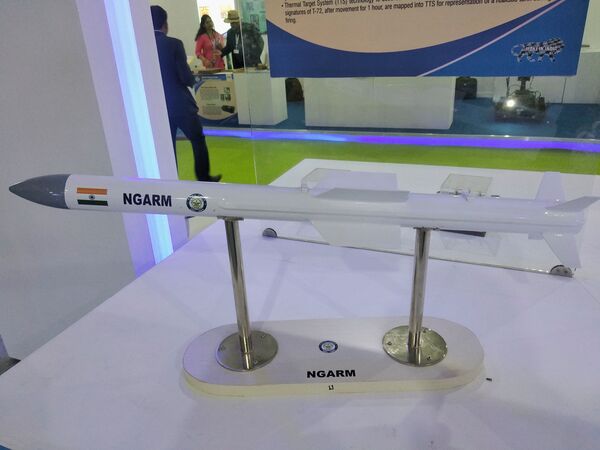
A model of DRDO's NGARM or Rudram-I. (Janes/Rahul Udoshi)
India's state-owned Defence Research and Development Organisation (DRDO) is preparing for a series of user trials featuring its Rudram-I anti-radiation missile (ARM) integrated with Indian Air Force (IAF) Su-30MKI fighter aircraft.
A DRDO official told Janes at the Aero India 2023 show, being held in Bangalore from 13 to 17 February, that the Rudram-I – previously referred to as the New Generation Anti-Radiation Missile (NGARM) – has completed development trials and that preparations are now under way for user trials that are scheduled to start by mid-2023.
The Rudram-I was first test-fired from an Su-30MKI in January 2019. The missile, which has been in development since 2012, is scheduled to eventually replace existing Kh-31 (AS-17 ‘Krypton') and Martel ARMs in the IAF inventory.
The Rudram-I is powered by an indigenously developed dual-pulse, solid-propellant rocket motor, and can be guided by a combination of passive and millimetric-wave (MMW) seekers.
The missile is fitted with a 55 kg pre-fragmentation (PF)-type warhead, which is detonated by a laser proximity fuze. The missile can be fired from altitudes between 1 and 15 km, and can operate in lock-on-before-launch and lock-on-after-launch modes. The missile's shelf-life is more than 10 years.
The initial plan to produce the Rudram-I featured joint manufacturing by state-owned enterprises – Bharat Dynamics Limited (BDL) and Bharat Electronics Limited (BEL).
However, private-sector firm Adani Defence and Aerospace recently joined the DRDO's ‘Development cum Production Partner' programme to mass-produce the missile. It is unclear whether the DRDO is exploring multisource supply options or moving solely to the private sector to meet future demands.
Looking to read the full article?
Gain unlimited access to Janes news and more...







